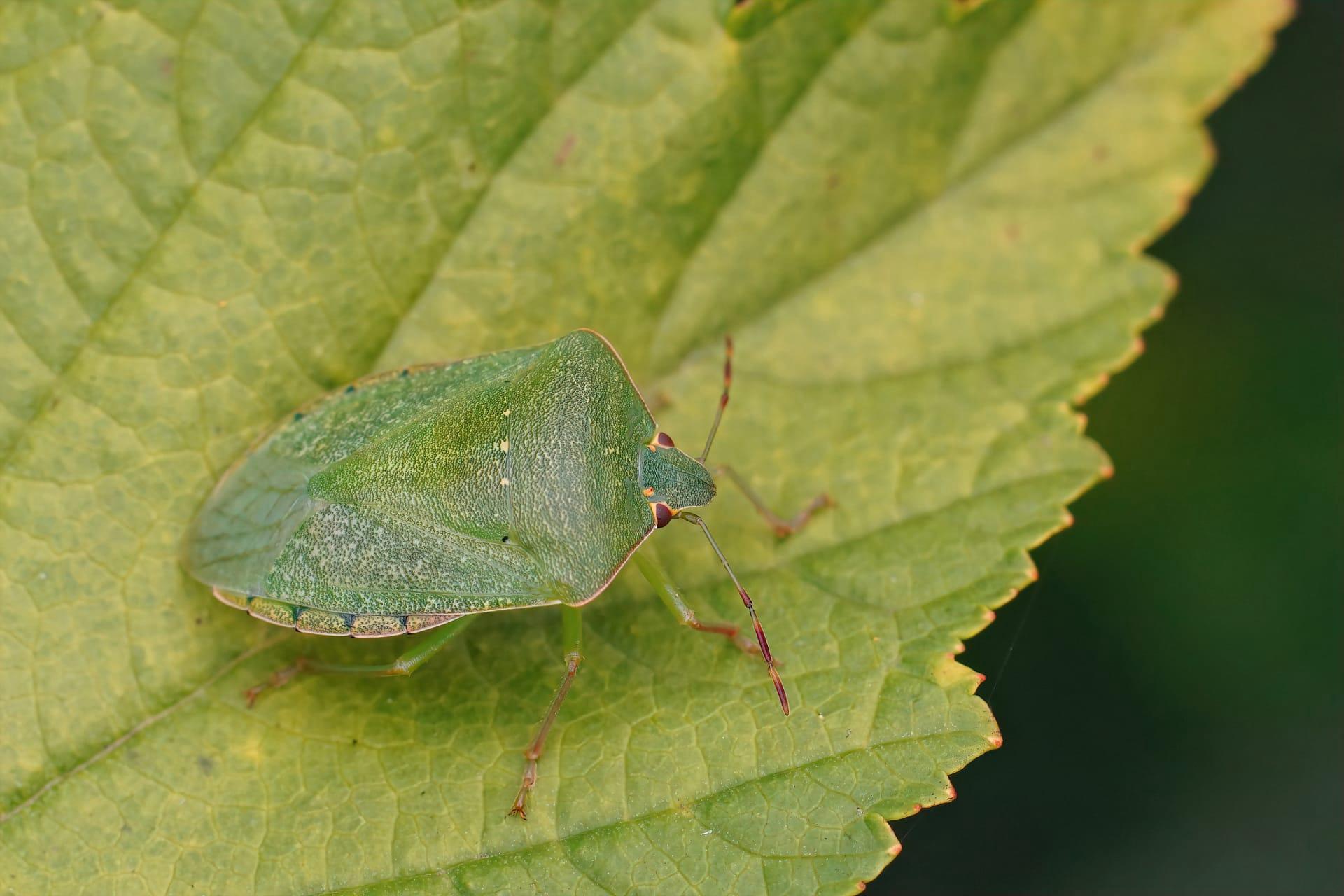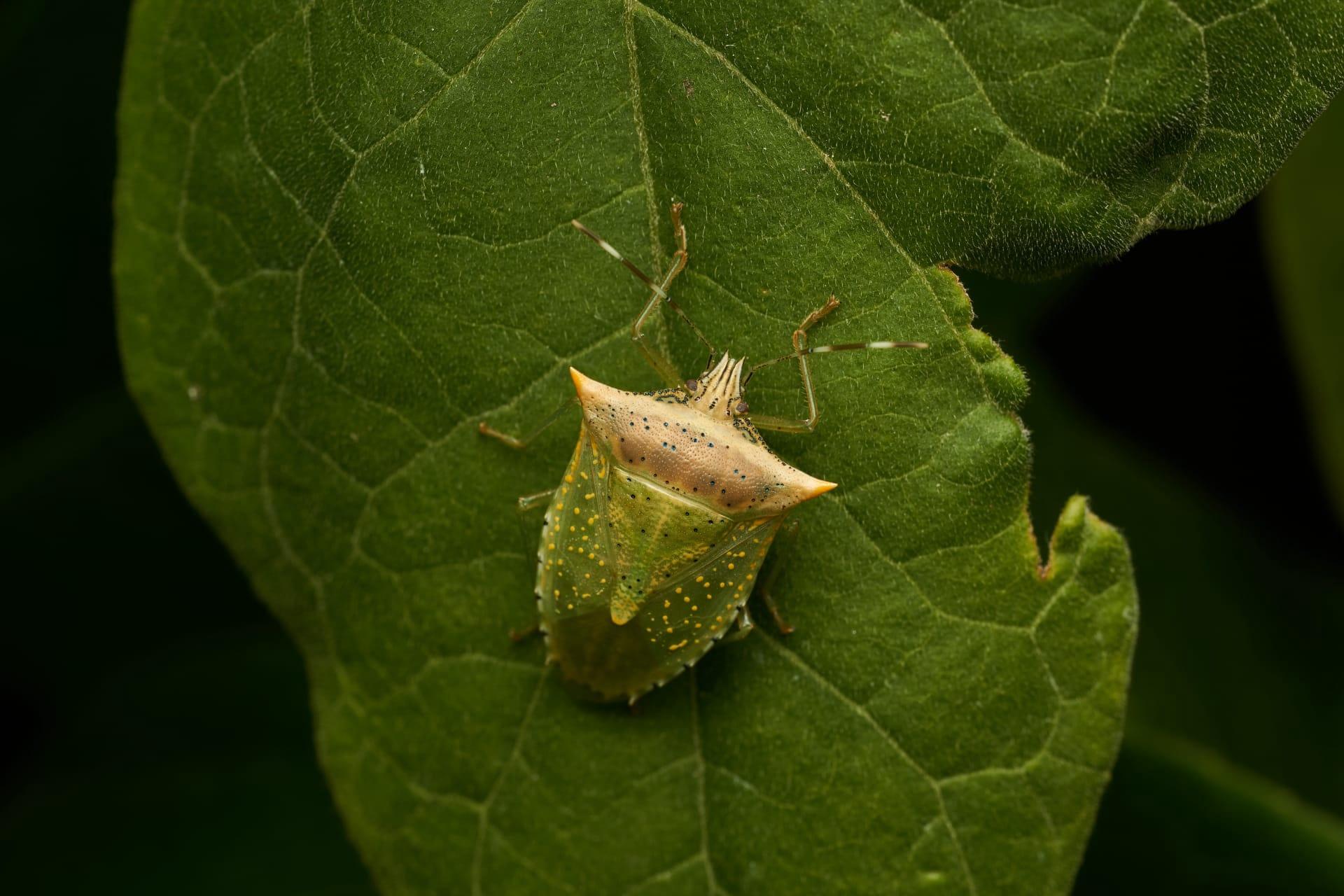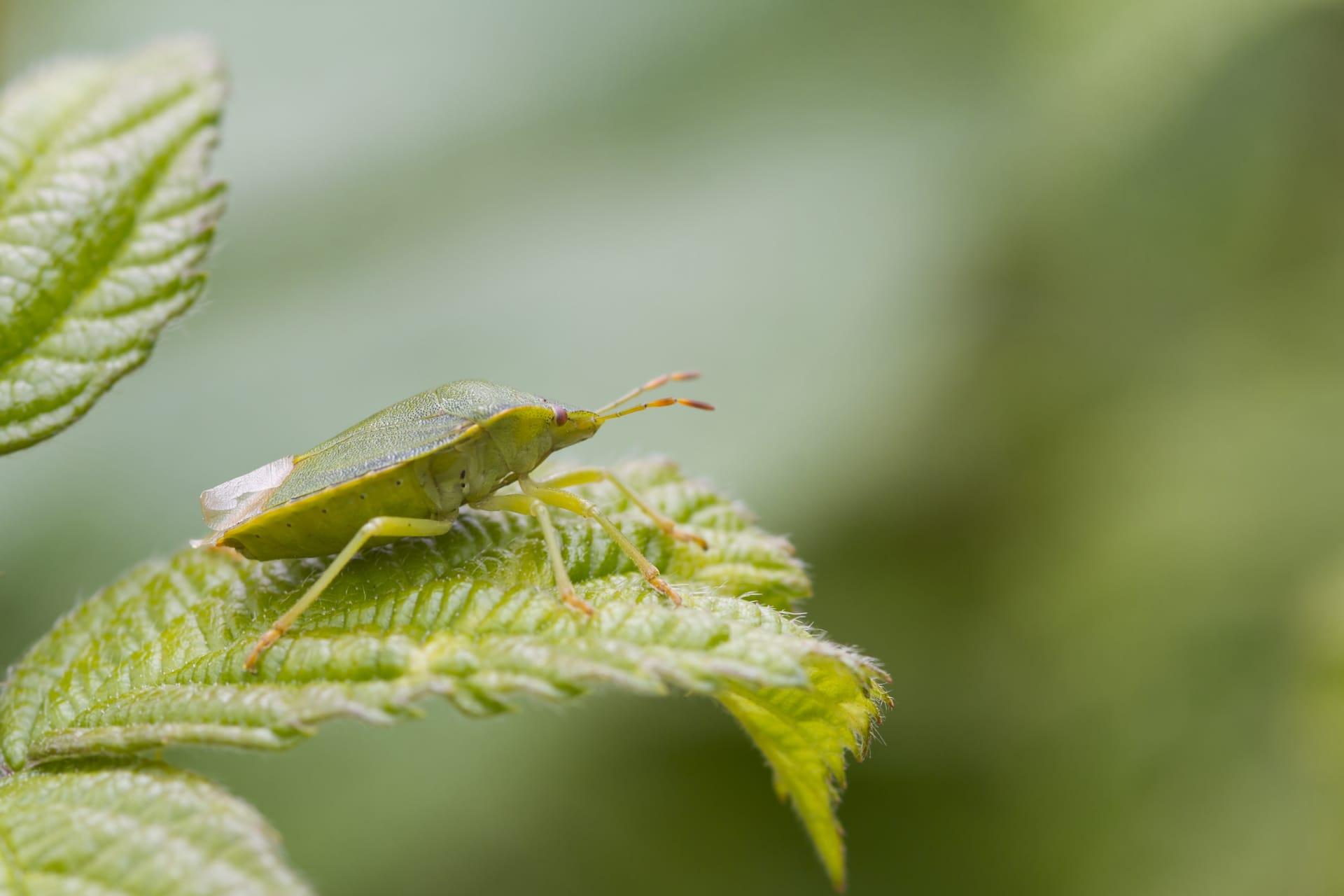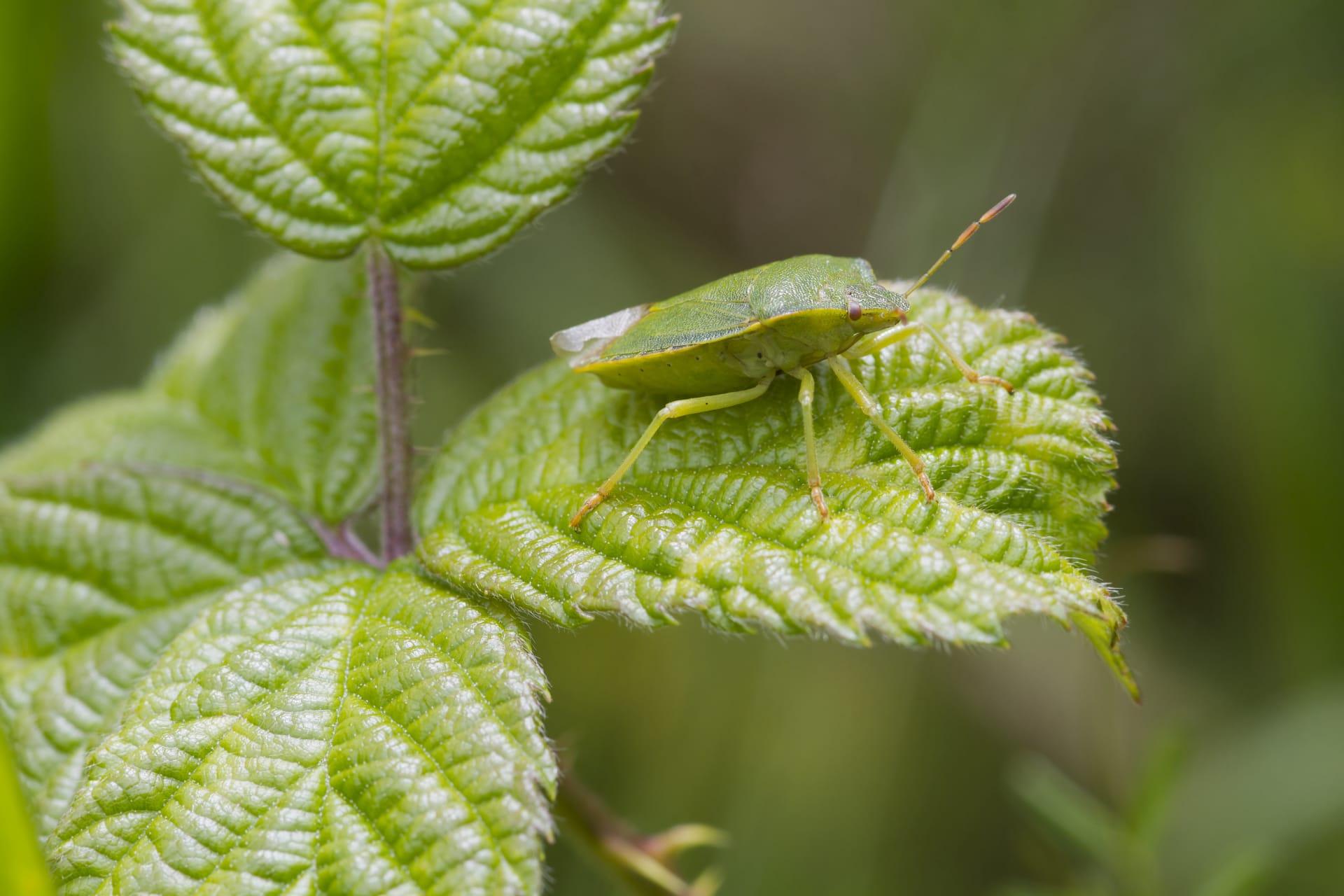Green Shield Bug Trivia
- Home /
- Trivia Question /
- Animal /
- Green Shield Bug Trivia
1
Question: What distinguishes the Green Shield Bug from other similar insects in appearance?
Answer: The Green Shield Bug, scientifically known as Palomena prasina, is notable for its distinctive shield shape and vibrant green color. Adult bugs measure about ½ inch (12-13 mm) in length. Their bodies are characteristically shield-shaped, a feature that provides them their name. In the autumn, their color changes to a greenish-brown as they prepare for hibernation, making them less conspicuous against the fallen leaves.
Question: How does the Green Shield Bug's diet impact garden ecosystems?
Answer: Green Shield Bugs are primarily herbivorous, feeding on a wide variety of plants, including some garden crops and ornamentals. They use their piercing mouthparts to suck sap from plants. While they're not considered major pests, large populations can cause significant damage to young plants by stunting growth or causing deformation of fruits and leaves. However, they also play a role in the garden ecosystem by serving as prey for birds and other insect predators.

2
Question: Is it true that Green Shield Bugs are harmful to all garden plants?
Answer: Contrary to popular belief, Green Shield Bugs are not harmful to all garden plants. While they do feed on a variety of plants, their impact is often minimal on well-established plants. They tend to cause noticeable damage only in large numbers or on young, vulnerable plants. Moreover, they are part of a balanced ecosystem, providing food for predators.
Question: Do Green Shield Bugs emit a bad odor as a defense mechanism?
Answer: Yes, Green Shield Bugs are known to emit a distinct, unpleasant odor when disturbed or threatened. This odor is produced from glands located on the thorax and is used as a defense mechanism against predators. The scent is often described as a strong, pungent smell, akin to rotting vegetables or cilantro, and is effective in deterring small mammalian and avian predators.

3
Question: How do Green Shield Bugs reproduce and what is their lifecycle?
Answer: Green Shield Bugs have an interesting lifecycle. They mate in the spring, and females lay clusters of eggs on the undersides of leaves. These eggs hatch into nymphs, which go through five stages of development, called instars, over 6-8 weeks. Each instar resembles the adult in shape but is smaller and varies in color. The nymphs mature into adults by late summer. The adults then prepare for hibernation in the winter, resuming activity in the spring.
Question: Can Green Shield Bugs fly, and if so, how well?
Answer: Yes, Green Shield Bugs are capable of flight. They have two pairs of wings; the front pair is hardened, serving as a protective cover for the more delicate hind wings. While they are not the most agile flyers compared to other insects, they are capable of short flights, often from plant to plant, which aids in their search for food and mates. Their flight is characterized by a buzzing sound.

4
Question: What role do Green Shield Bugs play in the ecosystem?
Answer: Green Shield Bugs are an important part of their ecosystem. As herbivores, they help in controlling the growth of plants by feeding on them. They are also a food source for a variety of animals, including birds and predatory insects, thus contributing to the biodiversity and balance of ecosystems. In some cases, they act as pollinators while moving from plant to plant.
Question: How do weather conditions affect the Green Shield Bug population?
Answer: Weather conditions have a significant impact on Green Shield Bug populations. Mild winters and warm springs can lead to early emergence from hibernation and potentially larger populations due to extended breeding seasons. Conversely, harsh winters can decrease their numbers. Additionally, prolonged wet or dry conditions can affect their food sources, which in turn influences their survival and reproduction rates.

5
Question: What is the habitat preference of the Green Shield Bug?
Answer: Green Shield Bugs are commonly found in a variety of habitats including gardens, orchards, forests, and grasslands. They prefer areas with abundant vegetation, as it provides them with food and shelter. These bugs are particularly prevalent in temperate regions and are often found on host plants like beans, peas, and various fruit trees.
Question: Are Green Shield Bugs solitary or social insects?
Answer: Green Shield Bugs are primarily solitary insects. They do not form colonies or social structures like some other insect species. However, they can often be found in groups, especially around abundant food sources or during mating season. This congregation is more a result of individual behaviors and needs rather than any social interaction.